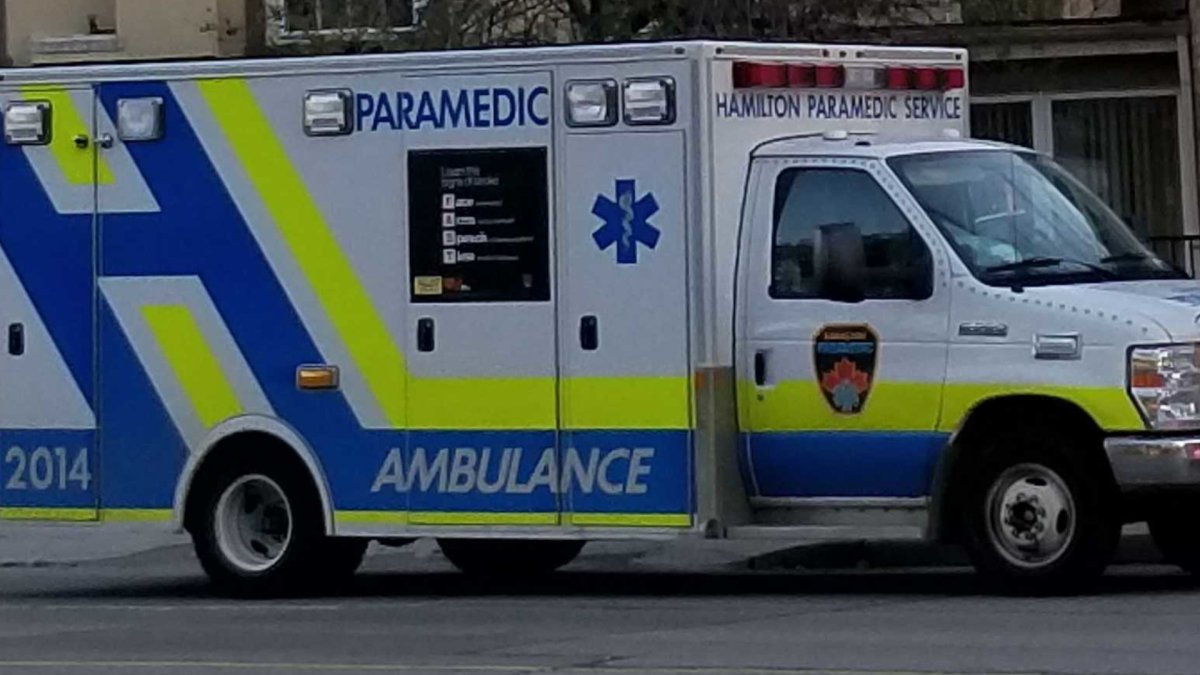The emergency room doctor who worked on Yosif Al-Hasnawi said he was “worried” that an incoming patient was “dying” following a second communication from paramedics transporting the wounded 19-year-old to hospital the night of Dec. 2, 2017.

Dr. Andrew Healey, the emergency physician on duty at St. Joseph’s hospital, told a courtroom he began scrambling a team of about nine people after receiving a second update from paramedics transporting an injured male from downtown Hamilton.
“I’m worried that this means that he is dying,” Healy told the court in response to Crown attorney Scott Patterson’s question about receiving a message that the victim’s heart rate had dropped.
The physician’s testimony came on day six in the trial of two paramedics, Steven Snively and Christopher Marchant, in a Hamilton superior court. The two are accused of not doing enough to save Al-Hasnawi.
Preparing for the worst
Healy recalled “preparing for the worst” upon receiving a initial “patch” from paramedics describing a pellet gun injury.
He would go onto say he planned on dealing with a gunshot wound since he wasn’t a “ballistics expert” and that the description of a “pellet gun” provided him with no useful information.
Patterson’s line of questioning targeted incoming data from a paramedic and standard on-board equipment, including an electrocardiogram (ECG), as Al-Hasnawi was being transported to hospital.
The Crown read back a passage from the first update “conveyed from Mr. Marchant” which stated that a 19-year-old patient with a small penetrating wound to his lower abdomen was being transported to hospital with a heart rate of about 145.
Healy characterized that “circumstance” as “abnormal” considering it was a person lying on a stretcher with a high heart rate.

Get daily National news
“I also note that they were extremely altered, and so confusion can certainly increase your heart rate, as can many things. But this is a very abnormal vital sign” Healy told the court.
Minutes later, Healy recalled another update he believed came from another medical staffer who said the heart rate of the incoming male had dropped to 45. He then notified his team to prepare for a “critically ill” patient and that he would be the lead physician.
Arrival at hospital
- ‘I couldn’t stop crying’: Memorial grows for 5-year-old boy killed in home
- Hundreds defrauded in door-to-door Ontario scam, Canada-wide warrants issued
- Quebec’s public security minister accuses gangs of using teens ‘to do their dirty work’
- Arrests in Canada part of global takedown of criminal messaging app: police
Patterson then played back video of the paramedic’s arrival at the emergency department and offloading of Al-Hasnawi at St. Joe’s.
He then asked Healy what he did when he first encountered Al-Hasnawi.
Healy said he checked the patient’s pulse and could not detect one.
Following CPR and an ultrasound, staff then made a request for blood from the hospital’s blood bank and prepared to begin a thoracotomy to open up Al-Hasnawi’s chest.
However, a time of death call was made before the blood arrived.
Healy later told the court the odds of surviving a thoracotomy with the particular injury Al-Hasnawi had was in “the low single-digit percentage survival rates.”
The defence explores the cause of death
In a cross-examination, Marchant’s lawyer Jeffrey Manishen began his line of questioning around the patient’s diagnosis and how a typical doctor arrives at one.
He went on to suggest that an “uncontrollable source of hemorrhage in the abdomen” potentially is what ended Al-Hasnawi’s life.
Healy responded by saying “It appears so.”
The doctor also agreed when Manishen asked whether having a “traumatic cardiac arrest” has an “abysmal” outcome.
In a re-examination, the Crown’s Patterson revisited data involving an ECG taken on Al-Hasnawi during transport and asked if Healy thought that represented a patient in cardiac arrest.
Healey said “no,” pointing out the data represents “electrical activity” which may not represent a heart rate or beating heart.
Before Healy stepped down, Justice Harrison Arrell asked the physician to clarify what was seen on the ultrasound of Al-Hasnawi’s upper right abdomen before the thoracotomy.
Healey replied “black fluid and white matter,” which was later confirmed as blood.
The toxicology report
Also on the stand for the Crown Wednesday was a toxicologist with the Royal Canadian Mounted Police (RCMP) who previously worked for the Centre for Forensic Sciences.
Attorneys questioned Dr. Nathalie Desrosiers about small traces of methamphetamine discovered in Al-Hasnawi’s system.
Desrosiers told the court the amounts of the drugs discovered would have no “visible effects” on the patient, in her opinion.
She also said further blood and urine tests for alcohol did not detect any.
Most of the participants on day six of the trial on Wednesday appeared via Zoom, including the defence and Crown.
Day seven of the trial will resume on Thursday, Dec. 3, 2020.








Comments